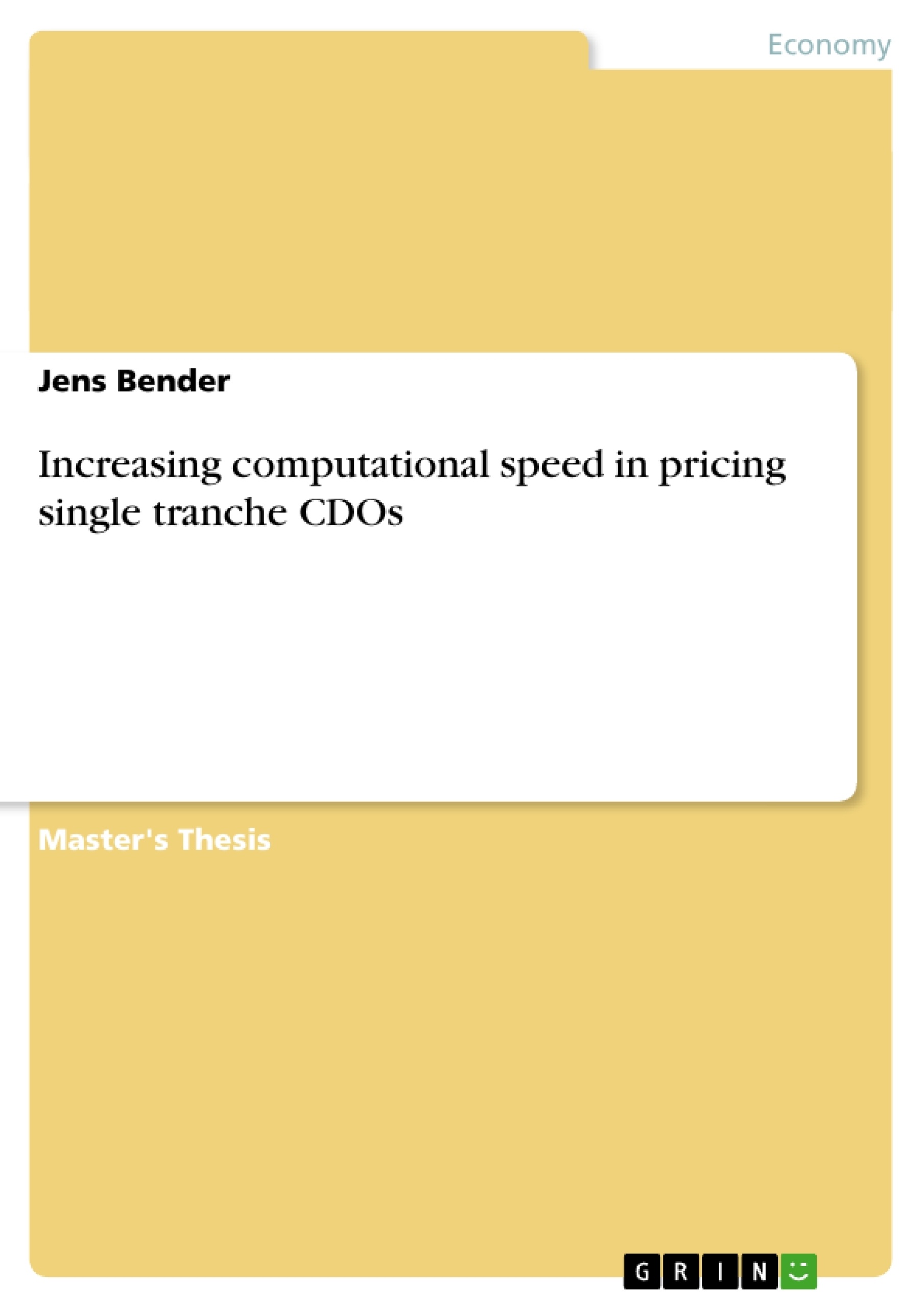In recent years enormous write offs in bank’s credit portfolios stimulated the demand for products that allow for an active trading of credit risk within the field of capital management. Securitization is a tool to reduce credit risk embedded on balance sheets. Thereby various assets are pooled in a portfolio that serves as collateral for issued notes. These asset backed securities (ABS) were initially aimed to securitize mainly mortgage and consumer loans of financial institutions in the early 1980s (Tavakoli [50]).
A collateralized debt obligation (CDO) is a type of ABS that was first set up to securitize junk bonds (below investment grade investments) in the late 1980s (Moore [41]). The growing demand for securitizing credit risk during the 1990s led to a tremendous rise in CDO issuance which was further stimulated by the introduction of synthetic CDOs whose portfolios consists of credit derivatives such as credit default swaps (CDS). In 2003 the CDO issuance volume was USD 94 billion, a rise of 27% compared to 2002.
Inhaltsverzeichnis (Table of Contents)
- INTRODUCTION
- CREDIT DERIVATIVES
- CREDIT DEFAULT SWAP
- CREDIT-LINKED NOTE
- TOTAL RETURN SWAP
- COLLATERALIZED DEBT OBLIGATION
- Definition
- Classification
- THE MERTON MODEL FOR QUANTIFYING DEFAULT PROBABILITIES OF A SINGLE OBLIGOR
- THE COPULA FUNCTION AS A TOOL TO DETERMINE JOINT DEFAULT PROBABILITIES
- GAUSSIAN COPULA
- SINGLE FACTOR GAUSSIAN COPULA
- PRICING CREDIT DERIVATIVES
- HAZARD RATE
- RISK NEUTRAL PRICING
- QUASI ANALYTICAL DETERMINATION OF JOINT DEFAULT DISTRIBUTION
- NTH TO DEFAULT SWAP
- CDO TRANCHES
- RISK MANAGEMENT OF A STCDO
- RISK EXPOSURE WITH RESPECT TO SPREAD CHANGES IN SINGLE NAME CDS (DELTA)
- RISK EXPOSURE WITH RESPECT TO CHANGES IN CORRELATION
- RISK EXPOSURE WITH RESPECT TO CHANGES IN RECOVERY RATES
- CONCLUSION
Zielsetzung und Themenschwerpunkte (Objectives and Key Themes)
This Master Thesis aims to investigate the pricing of single-tranche collateralized debt obligations (STCDOs), emphasizing the influence of various risk factors, such as correlation, default probabilities, and recovery rates. It explores methodologies for pricing credit derivatives and quantifying their risk exposures. The thesis delves into the complexities of STCDOs, aiming to provide a comprehensive understanding of their structure, pricing, and risk management.
- Pricing of single-tranche collateralized debt obligations (STCDOs)
- Influence of correlation, default probabilities, and recovery rates on STCDO pricing
- Methodologies for pricing credit derivatives and quantifying their risk exposures
- Risk management considerations for STCDOs
- The Merton model and the copula function in credit risk modeling
Zusammenfassung der Kapitel (Chapter Summaries)
- Introduction: This chapter introduces the topic of STCDOs, outlines the thesis's objectives, and provides a brief overview of the relevant literature and market context.
- Credit Derivatives: This chapter explores the concept of credit derivatives, covering various types such as credit default swaps, credit-linked notes, total return swaps, and collateralized debt obligations (CDOs). It delves into the structure, characteristics, and key features of these derivatives.
- The Merton Model for Quantifying Default Probabilities of a Single Obligor: This chapter examines the Merton model, a well-established framework for quantifying default probabilities of individual obligors. It discusses the model's assumptions, applications, and limitations in the context of credit risk modeling.
- The Copula Function as a Tool to Determine Joint Default Probabilities: This chapter introduces the concept of copula functions, which provide a powerful tool for modeling and estimating joint default probabilities in portfolios of credits. It focuses on Gaussian copulas and their application in pricing credit derivatives, particularly STCDOs.
- Pricing Credit Derivatives: This chapter explores various methodologies for pricing credit derivatives, including hazard rate modeling, risk-neutral pricing, and quasi-analytical determination of joint default distributions. It also examines the application of these methods in pricing CDO tranches and nth to default swaps.
- Risk Management of an STCDO: This chapter focuses on the risk management aspects of STCDOs, examining different types of risk exposures, such as changes in single-name CDS spreads (delta), correlation, and recovery rates. It investigates how these risks can be quantified and managed in practice.
Schlüsselwörter (Keywords)
The primary focus of this Master Thesis is on single-tranche collateralized debt obligations (STCDOs), their pricing, and risk management. Key concepts covered include credit derivatives, default probabilities, correlation, recovery rates, risk-neutral pricing, hazard rate modeling, copula functions, and delta exposures. The work utilizes the Merton model and investigates the application of various methodologies for pricing and managing the risks associated with these complex financial instruments.
- Quote paper
- Jens Bender (Author), 2005, Increasing computational speed in pricing single tranche CDOs, Munich, GRIN Verlag, https://www.grin.com/document/42719



